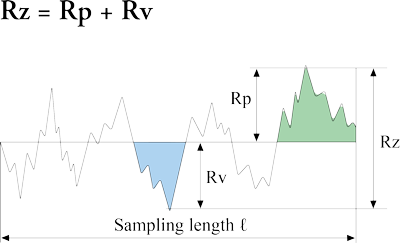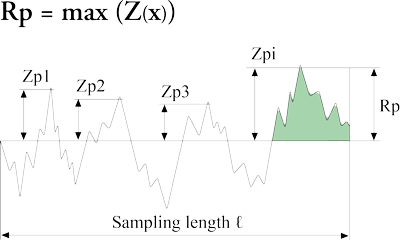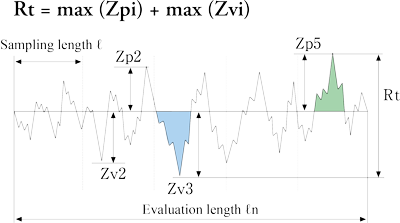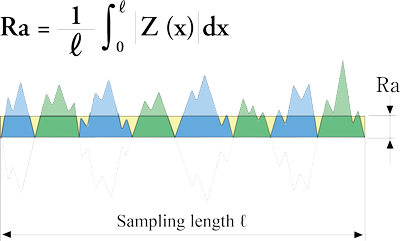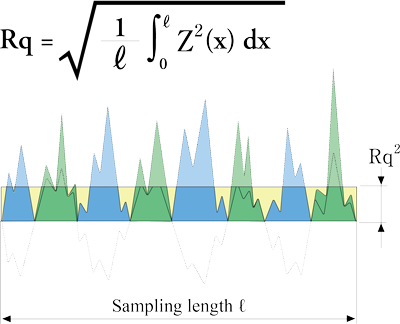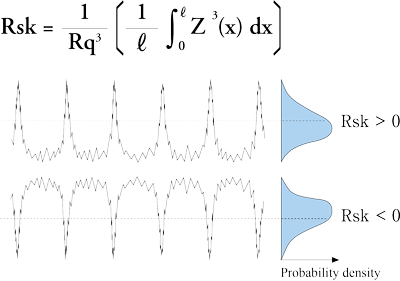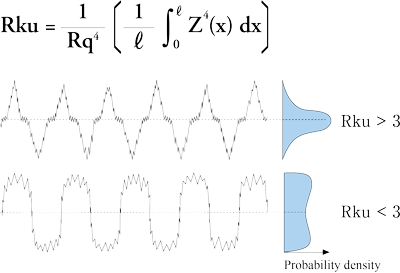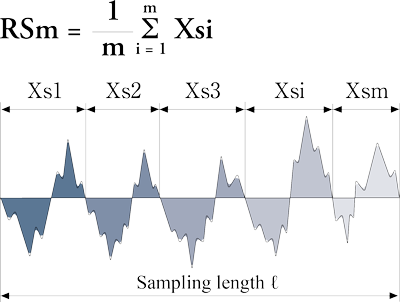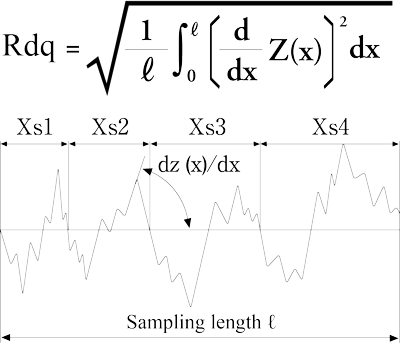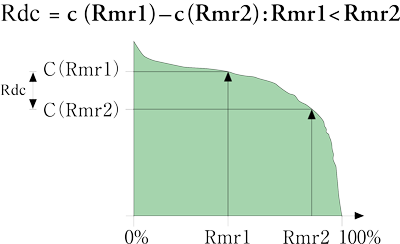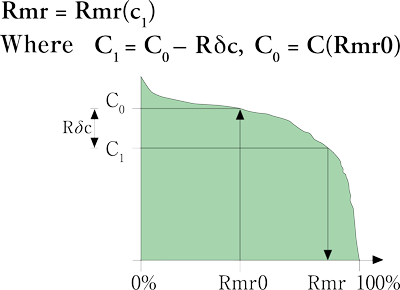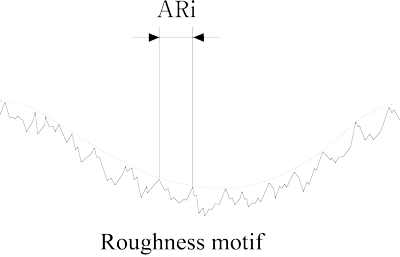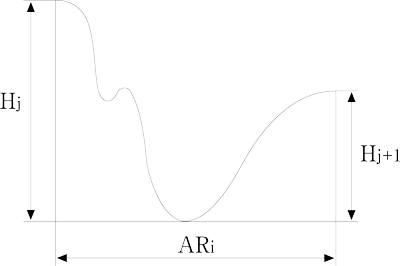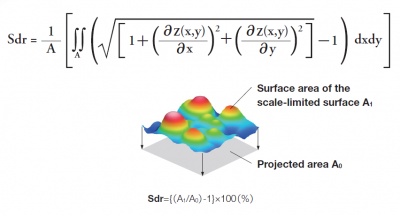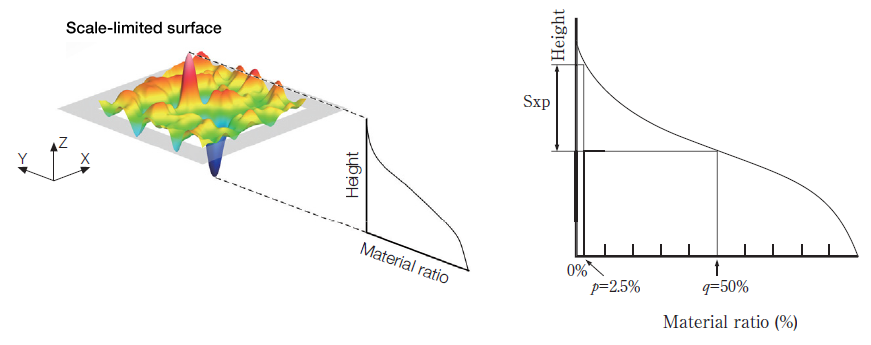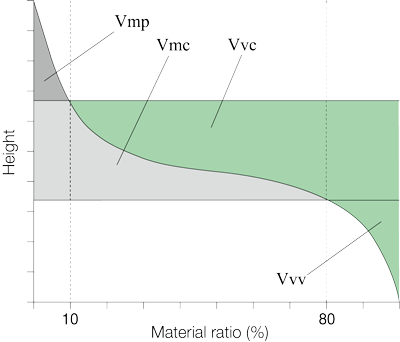轮廓法
Profile Method (Linear Roughness) Parameters
|
Amplitude Parameters (Peak and Valley) |
Maximum height (Rz)Represents the sum of the maximum peak height Zp and the maximum valley depth Zv of a profile within the reference length.
Pz Maximum height of the primary profile
Note |
(In the case of a roughness profile) |
Maximum profile peak height (Rp)Represents the maximum peak height Zp of a profile within the sampling length. Pp The maximum peak height of the primary profile
|
(In the case of a roughness profile) |
Maximum profile valley depth (Rv)Represents the maximum peak height Zp of a profile within the sampling length. Pv The maximum peak height of the primary profile
|
(In the case of a roughness profile) |
Mean height (Rc)Represents the mean for the height Zt of profile elements within the sampling length.
Minimum height discrimination: 10% of the Rz value
Pc The mean height of the primary profile element
|
(In the case of a roughness profile) |
Total height (Rt)Represents the sum of the maximum peak height Zp and the maximum valley depth Zv of a profile within the evaluation length, not sampling length.
Pt The maximum total height of the profile (Rmax in the case of JIS’82)
Note |
(In the case of a roughness profile) |
Ten-point mean roughness (Rzjis)Represents the sum of the mean value for the height of the five tallest peaks and the mean of the depth of the five deepest valleys of a profile within the sampling length.
Note |
(In the case of a roughness profile) |
Amplitude Average Parameters |
Arithmetic mean deviation (Ra)Represents the arithmetric mean of the absolute ordinate Z(x) within the sampling length. Pa The arithmetic mean height of the primary profile
Note |
(In the case of a roughness profile) |
Root mean square deviation (Rq)Represents the root mean square for Z(x) within the sampling length. Pq The root mean square height for the primary profile
Note |
(In the case of a roughness profile) |
Skewness (Rsk)The quotient of the mean cube value of Z (x) and the cube of R8 within a sampling length.
Rsk=0: Symmetric against the mean line (normal distribution)
Psk The skewness of the primary profile
Note |
(In the case of a roughness profile) |
Kurtosis (Rku)The quotient of the mean quadratic value of Z (x) and the fourth power of Rq within a sampling length.
Rku=3: Normal distribution
Pku The Kurtosis of the primary profile
Note |
(In the case of a roughness profile) |
Spacing Parameters |
Mean width (RSm)Represents the mean for the length Xs of profile elements within the sampling length.
Minimum height discrimination: 10% of the Rz value
Psm Mean width of the primary profile element
Note |
(In the case of a roughness profile) |
Hybrid Parameters |
Root mean square slope (Rdq)Represents the root mean square for the local slope dz/dx within the sampling length. Pdq The root mean square slope for the primary profile
Note |
(In the case of a roughness profile) |
Material Ratio Curves and Related Parameters |
Material ratio curve and probability density curvesMaterial ratio curves signify the ratio of materiality derived as a mathematical function of parameter c, where c represents the height of severance for a specific sample. This is also referred to as the bearing curve (BAC) or Abbott curve. Probability density curves signify the probability of occurrence for height Zx. The parameter is equivalent to the height distribution histogram. | (In the case of a roughness profile) |
Material ratio (Rmr(c))Indicates the ratio of the material length Ml(c) of the profile element to the evaluation length for the section height level c (% or μm). Pmr (c) The material length rate of the primary profile (formerly tp)
|
(In the case of a roughness profile) |
Profile section height difference (Rdc)Rdc signifies the height difference in section height level c, matching the two material ratios. Pdc The section height level difference for the primary profile
|
(In the case of a roughness profile) |
Relative material ratio (Rmr)Rmr indicates the material ratio determined by the difference Rδc between the referential section height level C0 and the profile section height level. Pmr The relative material length rate of the primary profile
|
(In the case of a roughness profile) |
Parameters of a Surface with Stratified Functional Properties |
Parameters of a surface with stratified functional propertiesRk, Mr1, and Mr2 values are calculated from the linear curve (equivalent linear curve) minimizing the sectional inclination corresponding to 40% of the material ratio curve. Draw a triangle with the area equivalent to the protrusion of the material ratio curve segmented by the breadth of the parameter Rk and calculate parameters Rpk and Rvk. Rk Core roughness depth
Note |
Motif Parameters |
Motif parametersMotif parameters are used for the evaluation of surface contact status based on the enveloped features of the sample surface. AR Mean spacing of roughness motifs: the arithmetic mean of roughness motifs ARi calculated from the evaluation length
Note |
|
区域法
Areal Method Parameters
|
Height Parameters |
Maximum height (Sz)This parameter expands the profile (line roughness) parameter Rz three dimensionally. The maximum height Sz is equivalent to the sum of the maximum peak height Sp and maximum valley depth Sv. Note | 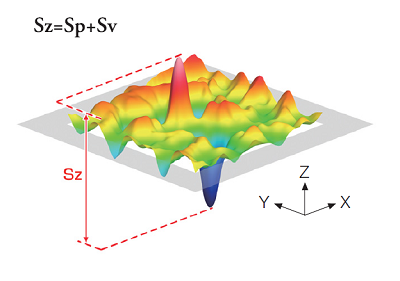 |
Maximum peak height (Sp)This parameter expands the profile (line roughness) parameter Rp three dimensionally. It is the maximum value for peak height. |  |
Maximum pit depth (Sv)This parameter expands the profile (line roughness) parameter Rv three dimensionally. It is the maximum value for the valley’s depth. |  |
Arithmetical mean height (Sa)This parameter expands the profile (line roughness) parameter Ra three dimensionally. It represents the arithmetic mean of the absolute ordinate Z (x, y) within the evaluation area. Note | 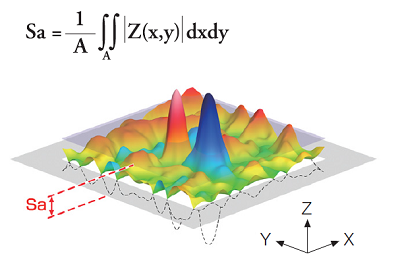 |
Root mean square height (Sq)This parameter expands the profile (line roughness) parameter Rq three dimensionally. It represents the root mean square for Z(x, y) within the evaluation area. Note |  |
Skewness (Ssk)This parameter expands the profile (line roughness) parameter Rsk three dimensionally; parameter Rsk, is used to evaluate deviations in the height distribution.
Ssk=0: Symmetric against the mean line
Note |  |
Kurtosis (Sku)This parameter expands the profile (line roughness) parameter Rku three dimensionally; Rku, is used to evaluate sharpness in the height distribution.
Sku=3: Normal distribution
Note | 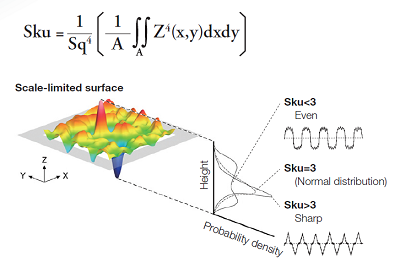 |
Spatial Parameters |
Autocorrelation length (Sal)The horizontal distance of the autocorrelation function that has the fastest decay to a specified value s (0≤ s < 1). Unless otherwise specified, the parameter is specified as = 0.2. Learn more about evaluating roughness parameters Texture aspect ratio (Str)This parameter is defined as the ratio of the horizontal distance of the autocorrelation function that has the fastest decay to a specified value s to the horizontal distance of the autocorrelation function that has the slowest decay to s (0 ≤ s < 1) and indicates the isotropic/anisotropic strength of the surface. The Str value ranges from 0 to 1; normally Str > 0.5 indicates a strong isotropy while Str < 0.3 is strongly anisotropic. Note | 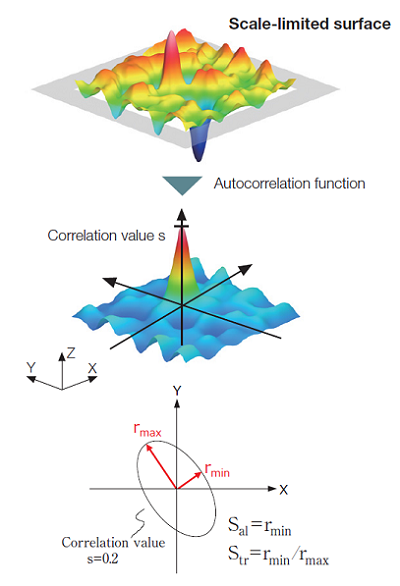 |
Hybrid Parameters |
Root mean square gradient (Sdq)This parameter expands the profile (line roughness) parameter Rdq three dimensionally. It indicates the mean magnitude of the local gradient (slope) of the surface. The surface is more steeply inclined as the value of the parameter Sdq becomes larger. Note | 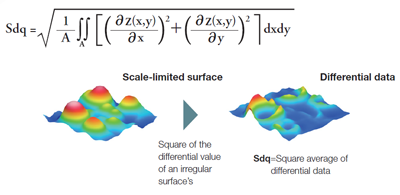 |
Function and Related Parameters |
This parameter expands the material ratio curve parameters (Rk, Rpk, Rvk, Mr1, and Mr2) of the profile parameter three dimensionally. Sk Core height: the difference between the upper and lower levels of the core
Note
|
Peak extreme height (Sxp)The difference in height between the p and q material ratio. Unless specified otherwise, the values p=2.5%, q=50% shall be applied. The material volume and void volume are calculated from a material ratio curve as indicated in the diagram. The position that corresponds to a material ratio of 10% and 80% is regarded as the threshold segmenting the peak, core, and dale. Vvv Dale void volume
Note
|
Miscellaneous Parameters |
Texture direction (Std)This parameter indicates the direction angle of the texture (parallel groove orientation, etc.). It is derived from the angle maximizing the angle spectrum of two-dimensional Fourier transformation images. Note | 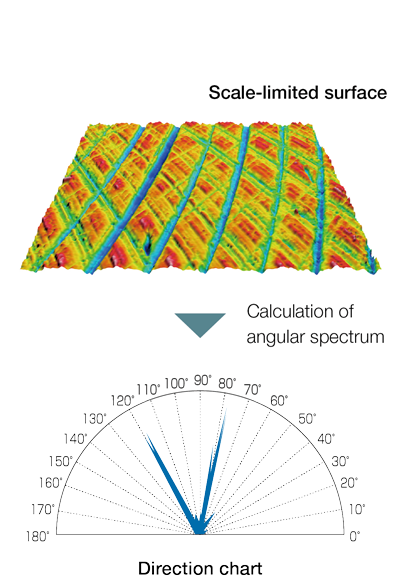 |
Feature Parameters |
Density of peaks (Spd)This is the number of peaks per unit area. Only peaks that exceed a designated size are counted. Unless otherwise specified, the designated size is determined to be 5% of the maximum height Sz. The parameter is calculated from the number of peaks divided by the projected area. Arithmetic mean peak curvature (Spc)Spc indicates the mean principle curvature (average sharpness) of the peaks. Only peaks that exceed a designated curvature are taken into consideration. Unless otherwise specified, the designated size is determined to be 5% of the maximum height Sz. The parameter is derived from the arithmetic mean curvatures of peaks within the evaluation area. Note | 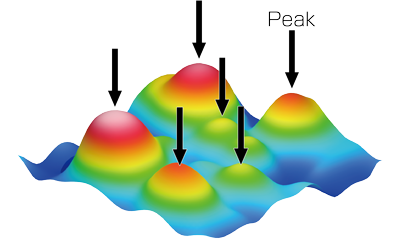 |
Ten-point height of surfaceThe average value of the heights of the five peaks with the largest global peak height added to the average value of the heights of the five pits with the largest global pit height. Five-point peak height (S5p)The average value of the heights of the five peaks with the largest global peak height. Five-point pit height (S5v)The average value of the heights of the five pits with the largest global pit height. | 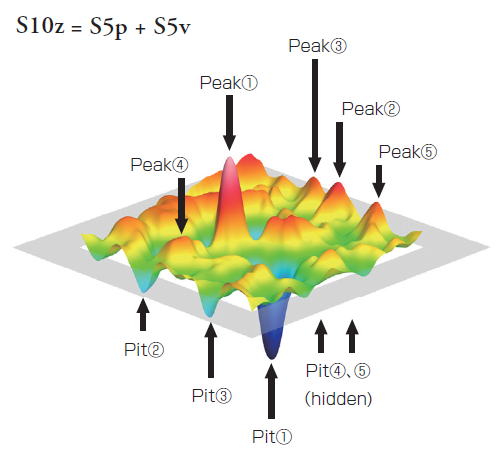 |
